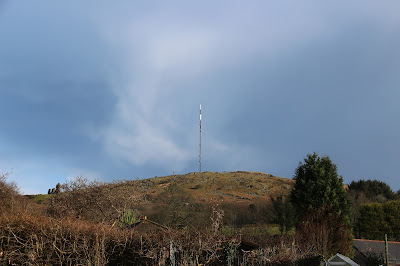 |
| The open moor looking west-ish towards Sheepstor on the left, with Sharpitor to the right. Fairly typical terrain for our walk and typically overcast skies. |
 |
| A leat with a mysterious purpose. Mysterious in the sense that we couldn't figure out where it was going as there didn't seem to be any discernible industrial activity on its route. |

















































